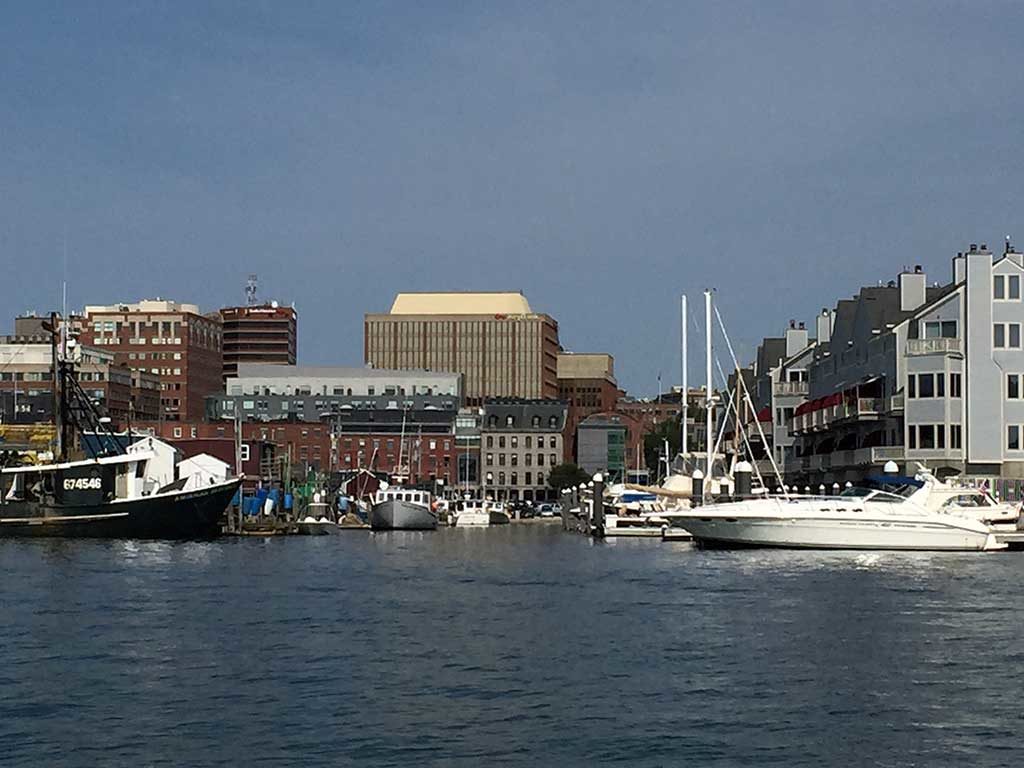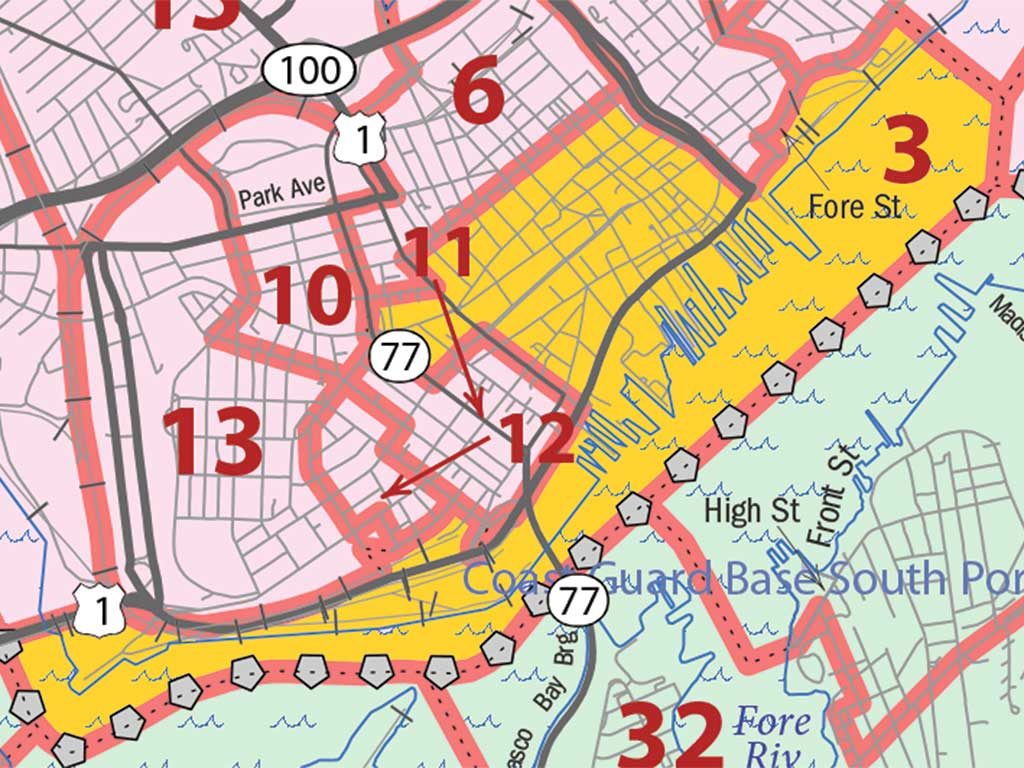By Tony Zeli, Editor

The waterfront opportunity zone includes some of the most booming areas of the city. -Photo by Tony Zeli
The governor chose census tracts from Madawaska to Saco to be opportunity zones, qualifying the geographic areas for tax incentivized investments. Most tracts are in poor rural areas, but others are found in more urban and quickly developing areas such as Portland, South Portland, and Westbrook.
Federal law allows governors from each state to nominate 25 percent of a state’s eligible low-income census tracts to be designated as opportunity zones. Of the 128 eligible tracts in Maine, Governor LePage selected a maximum of 32 for designation into the program. While Portland’s downtown is booming with real estate development, it is a low-income census tract and therefore eligible for the program.
Opportunity Zones
Created last year in the federal Tax Cuts and Jobs Act, the program is designed to encourage long-term investment in areas of poverty. It allows investors to create opportunity funds to defer taxes on capital gains. Through these opportunity funds they can reinvest within designated opportunity zones and realize huge tax benefits.
Investors take advantage of the program simply by filing a form with their taxes. Currently, the IRS has no requirements that investments must directly help the poor, create jobs, or spur economic growth. There is no rule to prevent investors from spending their opportunity funds on high-end real estate projects and creating the potential for gentrification.

US Census tract map with Portland in pink, South Portland in blue, and highlighted in yellow the Portland waterfront and Old Port opportunity zone.
Identified Investment Opportunities
According to the state’s Department of Economic and Community Development, Governor LePage selected Maine’s tracts based primarily on “identified investment opportunities where such investments would likely be met with success.”
For Portland’s western waterfront, the opportunity zone could bring huge tax savings for investors in the Americold cold storage facility. The planned warehouse is intended to support Eimskip’s shipping operations. However, no regulations would prevent the warehouse from warehousing other non-marine cold storage needs.
In September 2017, the City Council approved higher building heights along West Commercial Street. Allowable heights went from 45 to 55 feet. Also, the Council allowed up to 75 feet under the condition that the development is port-related. Specifically, this opened the way for Americold’s massive cold storage warehouse to be developed.
 In November 2017, Portland voters rejected a referendum that would allow residents within 500 feet of a proposed zoning change to object to it. This vote stopped neighborhood efforts to petition and roll back the western waterfront zoning change.
In November 2017, Portland voters rejected a referendum that would allow residents within 500 feet of a proposed zoning change to object to it. This vote stopped neighborhood efforts to petition and roll back the western waterfront zoning change.
Tony Zeli
Tony is publisher and editor. Contact him at tony@thewestendnews.com.





